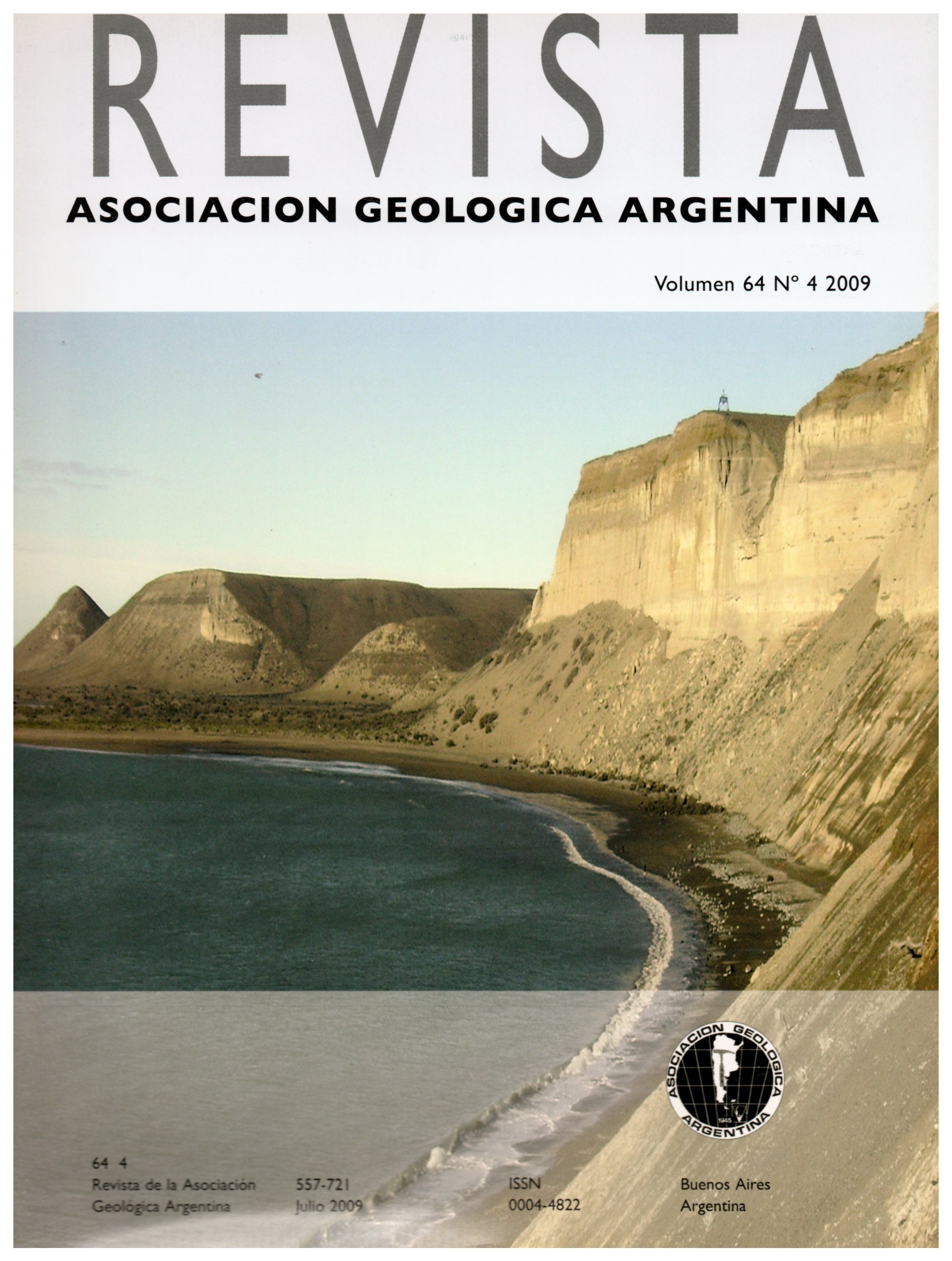Mass wasting in the Neuquén Cordillerasouth of 38º: its trigger factors.
Main Article Content
Abstract
The previous analysis of the prehistoric slide phenomena in the main Andes of Neuquén Province in Argentina (36º-38ºS), triggered the study of those located south of this latitude. Therefore a new set of mass wasting deposits has been identified, whose trigger factors and corresponding tectonic framework, wherethey are located, differ from the northern slides. Their study was performed inthree specific areas: Aluminé, Chapelco and Arroyo Limay Chico. Earth flows predominate in relation to slumps. The only exception is the Chapelco rock avalanche. Their occurrence seems to be related to the presence of Limay Chicomember of the Caleufú Formation, whose lithology (expanding clays), particular rheology before water saturation, and particular disposition underlying basaltic lava and conglomeradic plains were conditioning factors. The trigger factor of the Present and prehistoric earth flows has been intense orographic precipitations. Water saturation reduced friction and cohesion in materials, incrementing water pore pressure and producing slope instabilities. Rotational slides are related to the slope basal erosion produced by lateral river migration and additionally to precipitations. Slope orientation has been important in determining location of main slides. Lateral slope release throughthe flanks of glacial valleys due to debutressing because of the glacial retirein the area, has produced instability and rock fracturation that led to slide phenomena. The Chapelco rock avalanche is particularly related to copious precipitations during postglacial times. Thus sliding main trigger factors south of 38ºS differ from those proposed for the northern area where earthquakes dominated. Their specific age is still unknown, although their geomorphologic analysis allow to constraint a postglacial age for all these occurrences. However, temporal relationships are lacking for the specific caseof the arroyo Limay Chico, beyond the glaciated area.
Article Details

This work is licensed under a Creative Commons Attribution-NonCommercial 4.0 International License.
Nota de copyright
Los autores conservan los derechos de autor y garantizan a la revista el derecho de ser la primera publicación del trabajo licenciado según una licencia de atribución Creative Commons que permite a otros compartir el trabajo con el reconocimiento de la autoría y de la publicación en la que se publicó por primera vez.
Declaración de privacidad
Los nombres y direcciones de correo electrónico introducidos en esta revista se usarán exclusivamente para los fines declarados por esta revista y no estarán disponibles para ningún otro propósito u otra persona.

